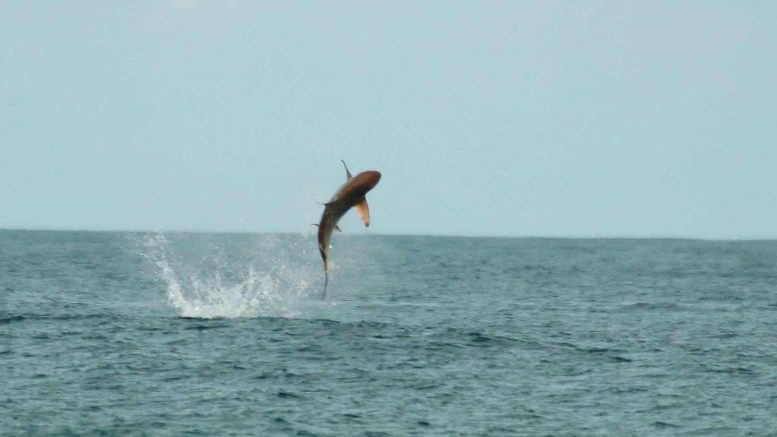
Sharks that live in the waters surrounding NASA’s Kennedy Space Center in Florida play an important role in the ecosystem. Each spring, blacktip sharks migrate north past Cape Canaveral, where they are often seen jumping out of the water. Credit: NASA/Russ Lowers
NASA’s Kennedy Space Center, located in the shark-populated Space Coast, actively contributes to marine conservation and research. While local shark populations are increasing, thanks to the efforts of marine biologists, the global trend shows a decline. Human encounters with sharks, including attacks, are relatively rare, further dispelling the ominous reputation of these apex predators.
Long before NASA’s Kennedy Space Center became the home for launching humanity’s future, the waters surrounding the Florida spaceport housed one of Earth’s top apex predators. It’s not unusual for people who regularly boat, fish, or swim in nearby lagoons and beaches to spot sharks living their best lives alongside the rockets sending astronauts into space.
Even though popular culture often portrays sharks as a threat to humans, the actual danger is very limited. In fact, sharks play an important role in the ecosystem. Their food hunting helps regulate prey populations, benefitting marine diversity and habitats such as coral reefs and seagrass.
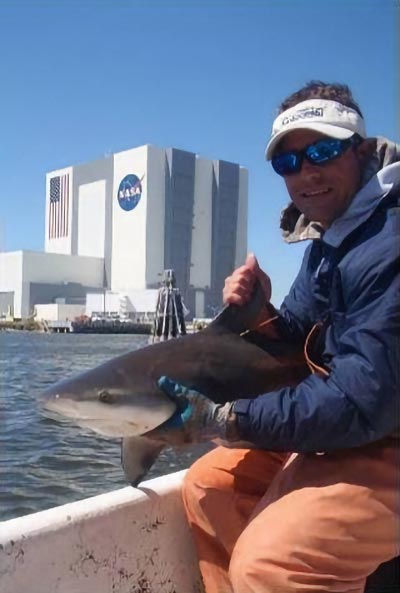
The bull shark is the most common shark species in the Indian River Lagoon. The Vehicle Assembly Building turn basin is a hotspot for young bull sharks on Kennedy property. Credit: NASA/Eric Reyier
Throughout the month of July, cable channels aired a wide range of “Shark Week” programming to delight their viewers. In honor of this heightened interest in our fine finned friends, here are some fun facts about these fascinating fish who make their homes in the waters of the Space Coast.
1. Eighteen different shark types have been documented near Kennedy.
- Among them are: Atlantic sharpnose, blacknose, blacktip, bonnethead, bull, dusky, finetooth, great white, hammerhead (great, scalloped and smooth), lemon, nurse, sandbar, sand tiger, spinner, thresher, and tiger.
- The most common in the lagoons near Kennedy is the juvenile bull. Researchers have spotted more bull sharks recently than ever in the area, primarily because the Space Coast serves as a popular spot for females to give birth and as a nursery habitat for their young.
2. Marine biologists working for NASA regularly monitor the waters in and around Kennedy.
- Besides ensuring that NASA stays compliant with endangered species and marine fishery regulations, these biologists help the agency minimize the impact of the U.S. space program on local wildlife and habitat. They’re also vital to one of Kennedy’s main goals: creating a culture of conservation. Their work helps NASA’s partners at the Merritt Island National Wildlife Refuge and Canaveral National Seashore properly manage the local marine population, ensuring the survival of sharks and endangered species such as sea turtles.
3. Acoustic telemetry and unmanned gliders help track the sharks in and around Kennedy.
- Kennedy researchers routinely tag sharks with individually unique sound transmitters and set them free. As each shark moves, biologists collect data on their movements from underwater receivers, giving insights on how they live and where they go. The researchers use similar techniques to study other marine life on center and nearby.
- Powered by the sun and waves, unmanned ocean gliders extend the range of surveyed areas, transmitting data back via satellite. The gliders can be piloted remotely by computer and have customized equipment that can be altered based on the mission.
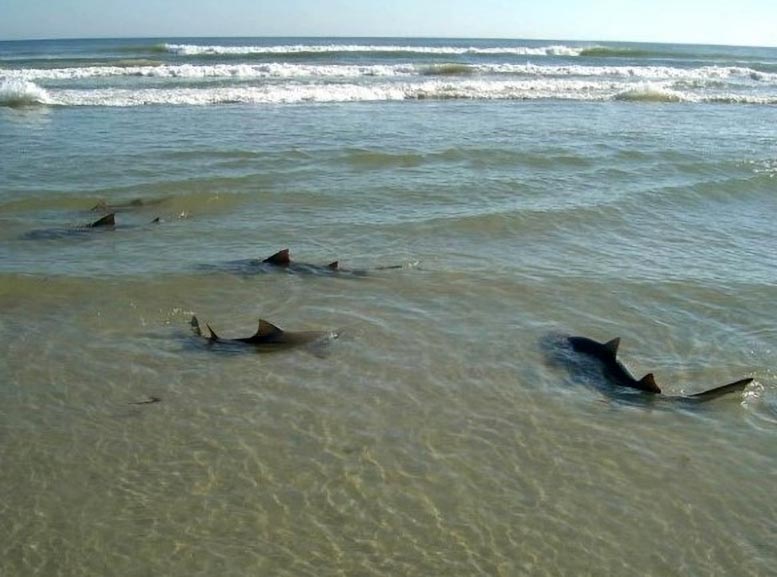
Cape Canaveral is an important winter nursery for young lemon sharks. Some tagged sharks have returned to the same location for up to six years in a row. Credit: NASA/Eric Reyier
4. The most common types of sharks found off of Kennedy’s beaches are Atlantic sharpnose, blacknose, blacktip, finetooth, and lemon.
- That’s according to a recently published research paper from Kennedy’s marine biologists. The five-year study of shark populations near offshore sand shoals – funded by NASA and the United States Bureau of Ocean Energy Management – also showed that sharks in the area are highly mobile and prone to seasonal migration. That includes the juvenile lemon, which is also known for hanging out in Brevard’s surf in large numbers during the winter.
5. Although it is on the rise in the southeastern United States, the shark population is in decline in many other parts of the world.
- Sharks on Earth are doing poorly for a variety of reasons, including being fished in numbers that are unsustainable for their survival. Proper understanding and management near Kennedy are helping increase the numbers of most shark species in the area, benefiting the local ecosystem.
6. It’s rare for humans to get bitten by sharks, even in areas where shark bites are most common.
- According to the Florida Museum of Natural History’s International Shark Attack File (ISAF), 57 unprovoked shark bites were reported worldwide in 2022, 16 fewer than the year prior. The United States logged 41 of those, including 16 in Florida and only one in Brevard County, where Kennedy is located.
- ISAF data shows 156 confirmed shark bites in Brevard since 1882, more than any other Florida county except Volusia (343). That averages to just over one shark bite reported every year.
7. It’s even rarer for humans to die from shark bites.
- There are 10 confirmed shark bite deaths in Florida since the 1900s and none since 2010, per ISAF. Brevard’s only confirmed shark bite fatality was in 1934.
- ISAF data also shows the risk of a shark-related fatality as less than 1 in 4 million. The average human is much more likely to die from fireworks, train crashes, lightning, sun/heat exposure, excessive cold, or a bike accident than a shark bite.



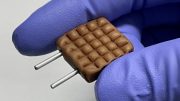
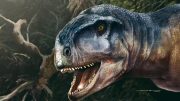


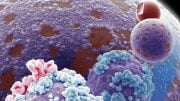
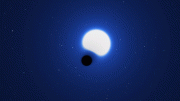
Be the first to comment on "Sharks Near NASA’s Florida Spaceport: 7 Fascinating Facts"